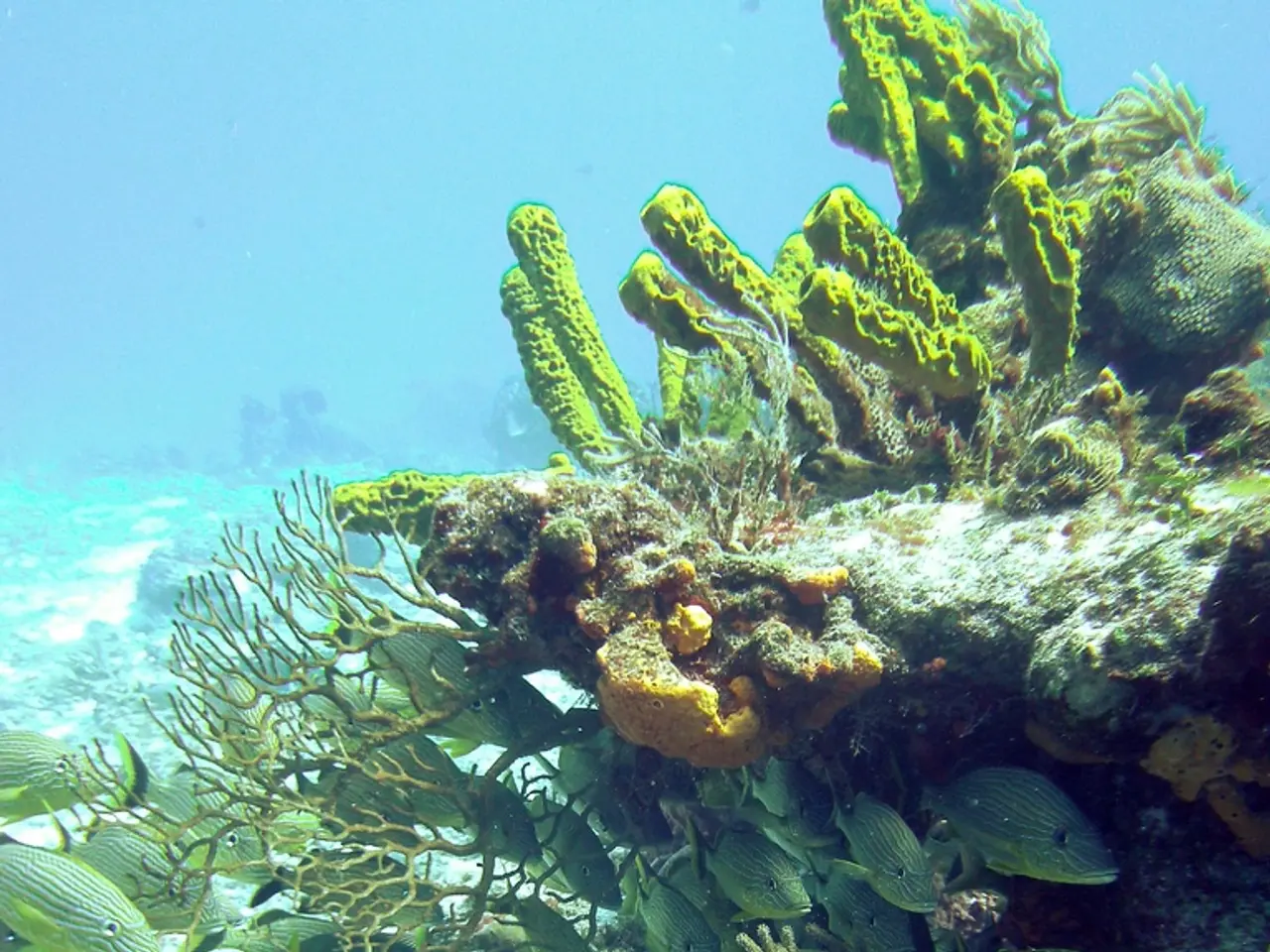Unveiling the Efficiency: Which Marine Sanctuaries Indeed Deliver Results (versus Designated Areas Lacking True Protection)
Marine Protected Areas (MPAs) are widely recognised as valuable tools for conserving marine biodiversity and restoring fish populations. However, their effectiveness is heavily dependent on several factors, including design, enforcement, and local context.
Conservation Benefits
Well-designed and enforced MPAs can help restore fish populations and marine habitats by reducing or eliminating fishing pressure within their boundaries. There is evidence that MPAs, particularly those with strict no-take zones, facilitate the recovery of exploited species, enhance local biodiversity, and can even benefit neighbouring fisheries through the "spillover effect." Combining MPAs with science-based fishing quotas and other regulatory measures can help some fish populations rebound, offering a template for broader ocean recovery.
Challenges and Limitations
Enforcement is critical for the success of MPAs. Illegal, unreported, and unregulated (IUU) fishing remains a major challenge, undermining the intended conservation outcomes. Inconsistent or lax enforcement can render even well-designed MPAs ineffective. Not all MPAs are created equal. Some are "paper parks," where restrictions exist on paper but are not enforced, resulting in minimal conservation impact. Destructive fishing practices, such as bottom trawling, can still damage marine ecosystems even outside MPAs, highlighting the need for broader regulatory frameworks.
Enforcement Solutions
Advances in electronic monitoring, satellite tracking, and drones can help detect and deter illegal fishing activities, especially when combined with onboard human observers and port controls. Engaging local communities, including traditional knowledge holders, can improve compliance and enforcement. Seasonal closures and artisanal fishing practices, aligned with natural cycles, have proven sustainable in some regions. Regional Fisheries Management Organisations (RFMOs) are adopting electronic catch documentation and port-state measures to combat IUU fishing and improve traceability, though broader implementation is needed.
Real-World Context
In regions where MPAs are strictly enforced and supported by conservation measures, marine populations have rebounded. However, globally, the effectiveness of MPAs varies, with many facing chronic enforcement problems, insufficient funding, and resistance from fishing interests. MPAs are most effective when complemented by science-based fisheries management, gear restrictions, seasonal closures, and broader ecosystem-based approaches.
A summary table outlines the key factors in MPA effectiveness:
| Factor | Impact on MPA Success | Example/Evidence | |-----------------------|--------------------------------------------|------------------------------------------| | Strong Enforcement | Essential for reducing illegal fishing | Illegal fishing undermines weak MPAs[4] | | Clear Design | Ensures boundaries and rules are followed | Paper parks ineffective[4] | | Community Engagement | Improves compliance and sustainability | Traditional practices work[3] | | Technology | Enhances monitoring and detection | Electronic monitoring, drones[2] | | Complementary Policy | Bolsters MPA impact | Science-based quotas, gear limits[1][3] |
Recent studies published in the journal Science have highlighted the importance of enforcement in the success of MPAs. Nearly half of the MPAs surveyed showed signs of industrial fishing, and countries can predict the locations of illegal activities and target patrol efforts, which is critical for reaching the Global Biodiversity Framework's 30 by 30 target. Boris Worm, a marine biologist, stated that while the best-protected MPAs are indeed working, most are not enforced. Raynor and her team emphasised that even limited coverage can yield actionable intelligence for enforcement. In the most restrictive International Union for Conservation of Nature (IUCN) categories, 80% of vessel detections came from untracked ships in the surveyed MPAs.
In conclusion, Marine Protected Areas can be highly effective tools for marine conservation when they are well-designed, strictly enforced, and supported by complementary management measures. However, without robust enforcement, even the best-designed MPAs risk becoming ineffective. The integration of technology, community engagement, and international collaboration is essential to maximise their conservation impact.
- The effectiveness of Marine Protected Areas (MPAs) in restoring fish populations and marine habitats can be significantly improved through the integration of science-based research, which aids in designing and enforcing MPAs.
- Despite the benefits of MPAs in enhancing local biodiversity, their success is often undermined by the challenge of illegal, unreported, and unregulated (IUU) fishing, emphasizing the need for effective enforcement measures.
- Innovations in technology, such as electronic monitoring, satellite tracking, and drones, can aid in detecting and deterring IUU fishing activities, thus bolstering the success of MPAs.
- In regions with strict enforcement and supportive conservation measures, MPAs have proven to be effective, leading to the rebound of marine populations. However, globally, the effectiveness of MPAs varies, and many struggle with chronic enforcement issues and insufficient funding.
- Engaging local communities, including traditional knowledge holders, can improve compliance and sustainability within MPAs, as demonstrated in some regions where artisanal fishing practices aligned with natural cycles have proven successful.
- In the context of climate change and environmental science, MPAs play a crucial role in maintaining Earth's biodiversity and ecology, as well as contributing to overall health-and-wellness and fitness-and-exercise through promoting sustainable conservation practices.
- Space-and-astronomy, while not traditionally associated with marine conservation, can potentially offer valuable insights through satellite monitoring to aid in the identification and protection of MPAs.
- The Global Biodiversity Framework's 30 by 30 target, which aims to protect 30% of the Earth's land and oceans by 2030, can be achieved through robust enforcement and the integration of technology, community engagement, and international collaboration within MPAs.




